Mnamon
Les écritures anciennes de la Méditerranée
Guide critique des ressources électroniques
News
-
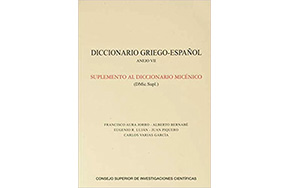 2020-11-25
2020-11-25Livre
Diccionario Griego-Español. Anejo VII. Suplemento al Diccionario Micénico (DMic.Supl.), Francisco Aura Jorro, Alberto Bernabé, Eugenio R. Luján, Juan Piquero, Carlos Varias García, CSIC, Madrid, 2020, 427 pp., ISBN 978-84-00-10656-0.
(M. Del Freo)
Le volume contient le supplément attendu du Diccionario Micénico publié par le CSIC en deux volumes en 1985 (entrées a-n) et 1993 (entrées o-z). Le Diccionario Micénico est l'ouvrage de référence pour tous ceux qui souhaitent avoir un aperçu complet des études liées à un terme mycénien spécifique. Chaque entrée du Diccionario rassemble et discute de manière critique toutes les hypothèses émises jusqu'à présent sur tout mot complet ou fragmentaire attesté dans les documents en Linéaire B. Le Suplemento ajoute de nouvelles entrées relatives aux termes attestés dans les documents en Linéaire B, publiés (ou republiés avec de nouvelles lectures) après 1985 et 1993. En outre, il met à jour les entrées a-n et o-z du Diccionario avec une partie des contributions qui sont apparues après 1985 et 1993 respectivement. Enfin, il comble un vide dans le Diccionario en ajoutant de nouvelles entrées pour tous les emplois logographiques des syllabogrammes individuels (abréviations, déterminatifs, ligatures, monogrammes). -
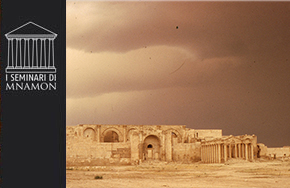 2020-11-20
2020-11-20Séminaires Mnamon
Vendredi 20 novembre à 15 heures aura lieu le séminaire en ligne suivant:
Marco Moriggi (Université de Catane)
“Hatra ed Edessa. Aramaico lingua del limes“.
Video streaming en direct ici.
(A.Russo) -
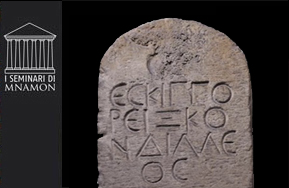 2020-10-09
2020-10-09Séminaires Mnamon
Mardi 13 ocbtobre à 11 heures aura lieu le séminaire en ligne suivant:
Coline Ruiz Darasse (CNRS Univ. Bordeaux Montaigne, Institut Ausonius)
“Sur les traces des Gaulois. Le Recueil informatisé des inscriptions gauloises (RIIG)“.
Video streaming en direct ici. (télécharger Microsoft Teams à l'avance)
(A.Russo) -
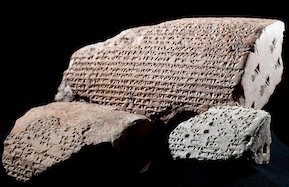 2020-09-30
2020-09-30Sèminaire
Lundi 12 octobre, dans le cycle de séminaires en ligne “Text and Performance in the Ancient Near East”, aura lieu le séminaire suivant: Giulia Torri (Université de Florence) "Oh Sun-god, you are looking constantly into man's heart!" On Prayers in Hittite Magical Rituals .
Pour plus de renseignements sur le programme du séminaires LCANE d'automne et sur les résumés des interventions cliquer ici.
La participation aux séminaires est gratuite mais l'inscription est obligatoire en cliquant ici.
-
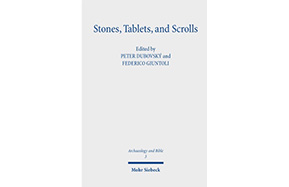 2020-08-28
2020-08-28Livre
Stones, Tablets, and Scrolls. Periods of the Formation of the Bible, Ed. by Peter Dubovský and Federico Giuntoli, Mohr Siebeck, 2020.
A constant re-evaluation of the new archaeological and textual material unearthed and edited in recent decades is arecurrent duty of ancient and modern scholars. Since the overwhelming amount of available data and the complexity ofnew methodologies can be competently handled only by specialized scholars, such a re-evaluation is no longer possible fora single scholar. For this reason, archaeologists, cuneiform and biblical scholars as well as classicists joined forces at aninternational conference in Rome in May 2017 to share their accumulated knowledge. The results of the proceedings arepresented here in the oral stage along with the Assyrian, Babylonian, Persian, and Greco-Roman periods.
(D.Tripaldi) -
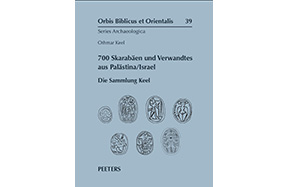 2020-07-06
2020-07-06Livre
700 Skarabäen und Verwandtes aus Palästina/Israel Othmar Keel, Orbis Biblicus et Orientalis. Series Archaeologica, 39, Peeters 2020.
The scarabs and related seal amulets published here form a collection that was assembled between 1975 and 2012 during work on the author’s Corpus of stamp-seal amulets from Palestine/Israel. The aim was to prevent numerous unusual and interesting pieces disappearing from view in unpublished private collections or as items of jewellery, and to guarantee researchers and the public continuing access to them. The 700 pieces were selected in such a way that the most significant groups and motifs that were produced in or imported into Canaan/Palestine are represented and, collectively, form a kind of textbook on the subject. In that respect, the collection and this catalogue are both unique.
(D.Tripaldi) -
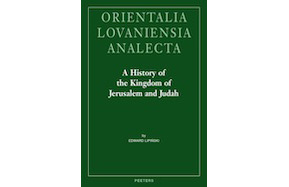 2020-07-06
2020-07-06Livre
A History of the Kingdom of Jerusalem and Judah Edward Lipinski, Orientalia Lovaniensia Analecta, 287, Peeters,2020
This history of the Kingdom of Jerusalem and Judah is quite different from the usual narratives of biblical history. It parallels the same author’s History of the Kingdom of Israel (OLA 275) and is mainly based on information provided by epigraphic sources dating from the 19th/18th century B.C. on, when Jerusalem and its rulers are first mentioned. The book is divided in seven chapters. The first one deals with the proto-history of Jerusalem in Bronze Age and Iron Age I. The second one concerns the Davidic dynasty whose lineage is followed until the mid-ninth century. Chapters III and IV continue the history of the kingdom until the destruction of Jerusalem by Babylonians in 587. After ca. 800 B.C. the name of the kingdom was changed from Beth David in Judah following internal dynastic problems. Chapter V examines some questions concerning religion in Jerusalem and Judah, especially the alleged "sacred prostitution" and the "molk-sacrifices". Chapter VI discusses the special case of the relations between the Yahwistic sanctuary of Bethel, annexed to Judah by king Josiah, and the theonym Bethel, attested in Jewish-Aramaean ambiences of the Persian period. Chapter VII deals with burial customs and the conception of the netherworld or Sheol, mainly from the monarchic period on.
(D.Tripaldi) -
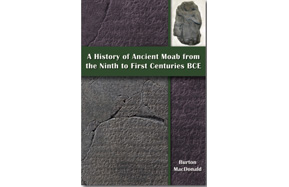 2020-04-30
2020-04-30Livre
Burton MacDonald A History of Ancient Moab from the Ninth to First Centuries BCE, SBL Press, Atlanta, 2020, 304 pp.
Synthèse très récente de nos connaissances, littéraires et épigraphiques, sur Moab, sa langue et sa civilisation, jusqu'à l’époque babylonienne.
(D.Tripaldi)
-
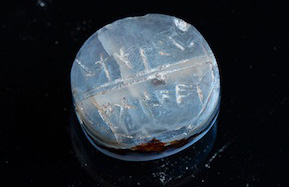 2020-04-21
2020-04-21Les principales découvertes archéologiques en 2019 en Israël
Classement des principales découvertes archéologiques réalisées en Israël en 2019. On signale trois petites inscriptions en alphabet paléohébraïque, sur des empreintes de sceaux trouvées à Jérusalem entre mars et septembre, datables du VIIIe-VIIe siècles av. J.-C. L'article contient des images, un bref commentaire et d'autres liens.
https://www.timesofisrael.com/digging-the-land-the-top-10-holy-land-archaeology-stories-of-2019/
(D.Tripaldi)
-
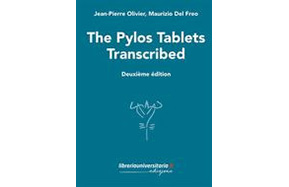 2020-02-03
2020-02-03Livre
The Pylos Tablets Transcribed. Deuxième édition, par Jean-Pierre Olivier et Maurizio Del Freo, Padova, Libreriauniversitaria.it edizioni, 2020, XX + 388 pp., ISBN 978-88-3359-205-3.
Ce volume contient la deuxième édition des tablettes de Pylos en transcription. La translittération se fonde sur celle de The Pylos tablets transcribed, 2 vol., Rome 1973-1976, réalisée par E. L. Bennett, jr. et J.-P. Olivier, ainsi que sur une série de contributions contenant les nouveaux textes, raccords et lectures publiés entre 1992 et 2017. Cette nouvelle édition vise non seulement à fournir aux spécialistes de linéaire B un instrument de travail à jour, mais aussi à offrir une contribution critique à ceux qui se sont engagés dans la réalisation du corpus, objectif final d’un travail éditorial complexe et pénible qui a vu, au cours de plusieurs décennies, la collaboration de nombreux spécialistes. L’ouvrage est dédié à la mémoire du pionnier de l’épigraphie pylienne, E. L. Bennett, jr.
